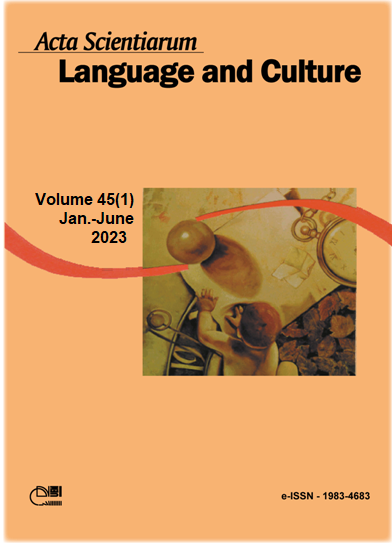Hypermodality in EFL vocabulary teaching and learning mediated by digital technologies: from desktop to hologram
Abstract
This paper aims at investigating the effects of two hypermodal environments on EFL/ESL vocabulary teaching and learning: Desktop Hypermedia and Augmented Reality. This work is grounded on theoretical studies that deal with hypermodality in vocabulary learning, with the importance of immersive environments, particularly Augmented Reality, and the relationship between them (Souza, 2004; Saito, 2015; Procópio, 2016; Johnson-Glenberg, 2018; Parmaxi & Demetriou, 2020; Ansarin & Khabbazi, 2021). The experiment was applied to 30 students, divided into a control group and an experimental group. For analysis purposes, the results were obtained using vocabulary tests, namely, pre-test, immediate post-test, and delayed post-test, which aimed to assess the short- and long-term lexical knowledge. The results revealed that both groups benefited from the environments they were exposed to. However, the learning gain of the experimental group exposed to the Augmented Reality environment was more expressive in vocabulary learning and retention of learned words.
Downloads
Metrics
DECLARATION OF ORIGINALITY AND COPYRIGHTS
I Declare that current article is original and has not been submitted for publication, in part or in whole, to any other national or international journal.
The copyrights belong exclusively to the authors. Published content is licensed under Creative Commons Attribution 4.0 (CC BY 4.0) guidelines, which allows sharing (copy and distribution of the material in any medium or format) and adaptation (remix, transform, and build upon the material) for any purpose, even commercially, under the terms of attribution.
Read this link for further information on how to use CC BY 4.0 properly.




















6.png)









